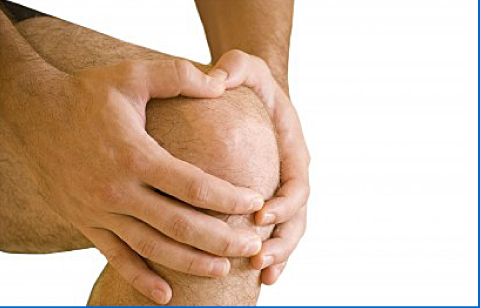Articular Cartilage Damage
Articular cartilage is the layer of extremely smooth shiny white tissue which covers the ends of the articulating bones inside the knee joint. Its primary function is to allow the ends of the bones to move freely against each other as its surface is very slippery. Also this cartilage acts as a cushion between the articulating bone ends and transfers the loads across them. Part of the very nature of this complex structure is that it does not heel or re-generate itself. So, when areas of articular cartilage are lost it cannot be replaced and the resulting defect can only be filled with scar cartilage tissue. This scar cartilage is not as good as the original damaged cartilage. The treatment may therefore be quite challenging.
The damage in the articular cartilage may be caused by an acute injury to the knee. This in turn results to an acute defect on otherwise a healthy normal cartilage prior to the injury. One should differentiate between this acute condition and the other chronic degeneration process of the knee arthritis. This is because the lines of treatment and prognosis are different between them.
Patients who sustained acute cartilage injury may complain of pain, swelling, catching, clicking, giving way or locking.
The diagnosis of this injury is someway difficult. The imaging tests (x-ray, MRI scan etc) are not accurate to reveal the defect in the cartilage. At best they may show some tell tales of it. Nevertheless, the specialist may arrange some of these tests in order to check for other injuries in the knee (like ACL rupture, Meniscal tear etc) which are common associates’ with this type of injury. The most accurate way to diagnose and assess the full extent of the cartilage damage would be provided by the knee arthroscopy. Back...
Treatment
The current knowledge and most of the published literature would support the principle that these lesions should be treated in order to minimise the chance of arthritis in the future.
There are few surgical options available for this condition. The suitability of any of these option will be discussed thoroughly with the patient. Mr. Ayoub will explain the procedure, its success rate and all Pro’s and Con’s associated with it. These options are:
1. Arthroscopic Debridement Chondroplasty.
This is a keyhole surgery and can be done as a Day-Surgery operation. The first part is to check the whole knee from within. This includes full assessment of the articular cartilage damage. A High Definition digital photograph (and sometime video) of the inside of your knee will be taken and be a part of your secure medical records, subject to your consent.
This operation is indicated in specific mild form of damage. This is achieved using mechanical or thermal reshaping of uneven articular cartilage. The aim is to shave down any loose poor quality cartilage flaps to a smoother surface avoiding any damage to healthy surrounding cartilage. The results of this operation are conflicting in the literature. The recovery from this operation is fast and you should be able to go back to your normal activities within several days. Back...
2. Arthroscopic Microfracture Chondroplasty
This is a keyhole surgery and can be done as a Day-Surgery operation. The first part is to check the whole knee from within. This includes full assessment of the articular cartilage damage. A High Definition digital photograph (and sometime video) of the inside of your knee will be taken and be a part of your secure medical records, subject to your consent.
This operation is indicated when the cartilage damage is more extensive and exposing the bare bone underneath. The procedure involves clearing away all the poor quality damaged cartilage surrounding the injured area, leaving a “crater” on the surface of the cartilage. Then the bony bottom of the crater is drilled using special arthroscopic instruments to make small holes in the bone. These holes produce bleeding points which stimulate scar cartilage tissue filling and covering the crater.
In most cases, you may need to use crutches for 4-6 weeks. This is an essential time needed for your body to allow the new cartilage to develop properly and to increase the chance of success of this operation. You will be taken through a rehabilitation programme under the supervision of the physiotherapist. Mr. Ayoub will provide details about your recovery in reflection to your work and life style circumstances
. Back...
|



